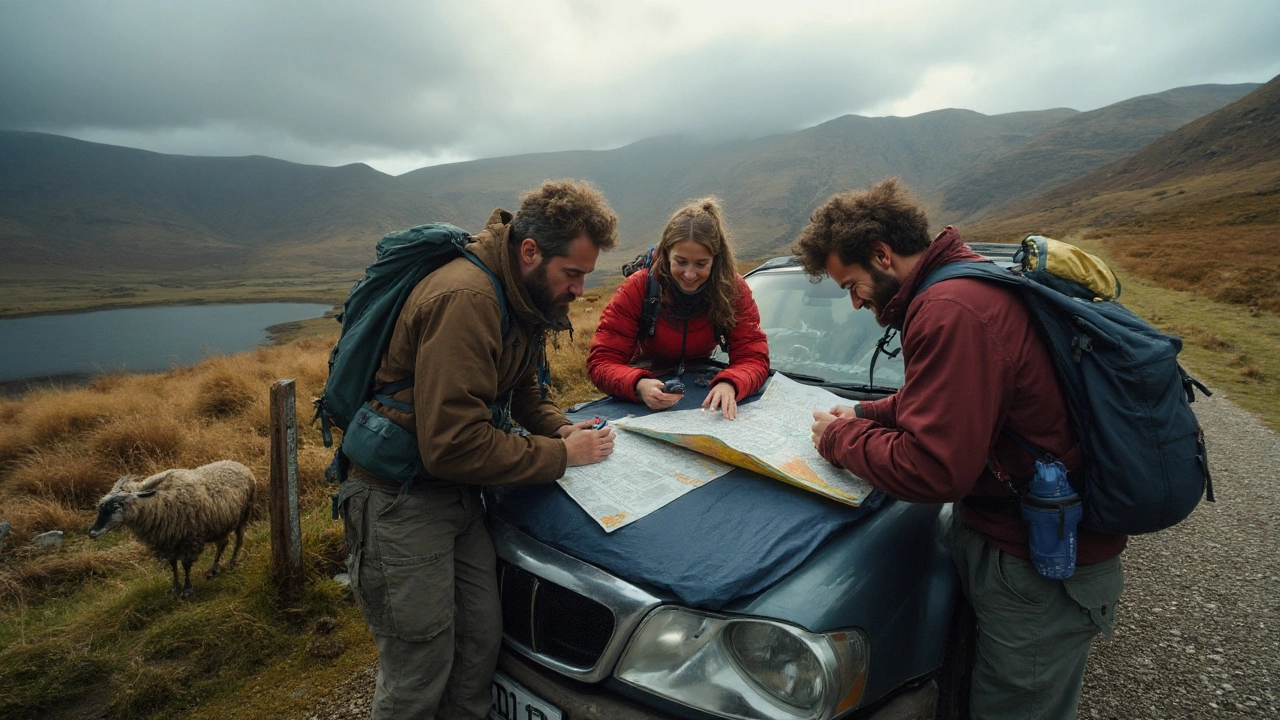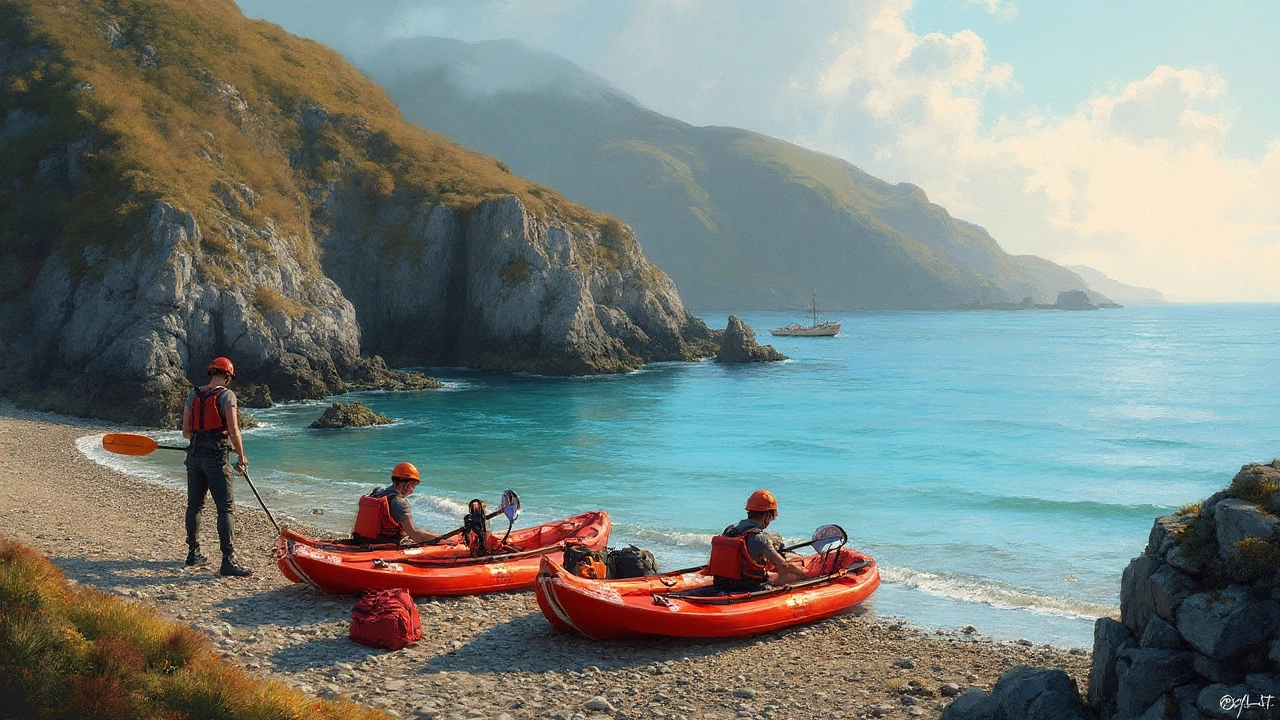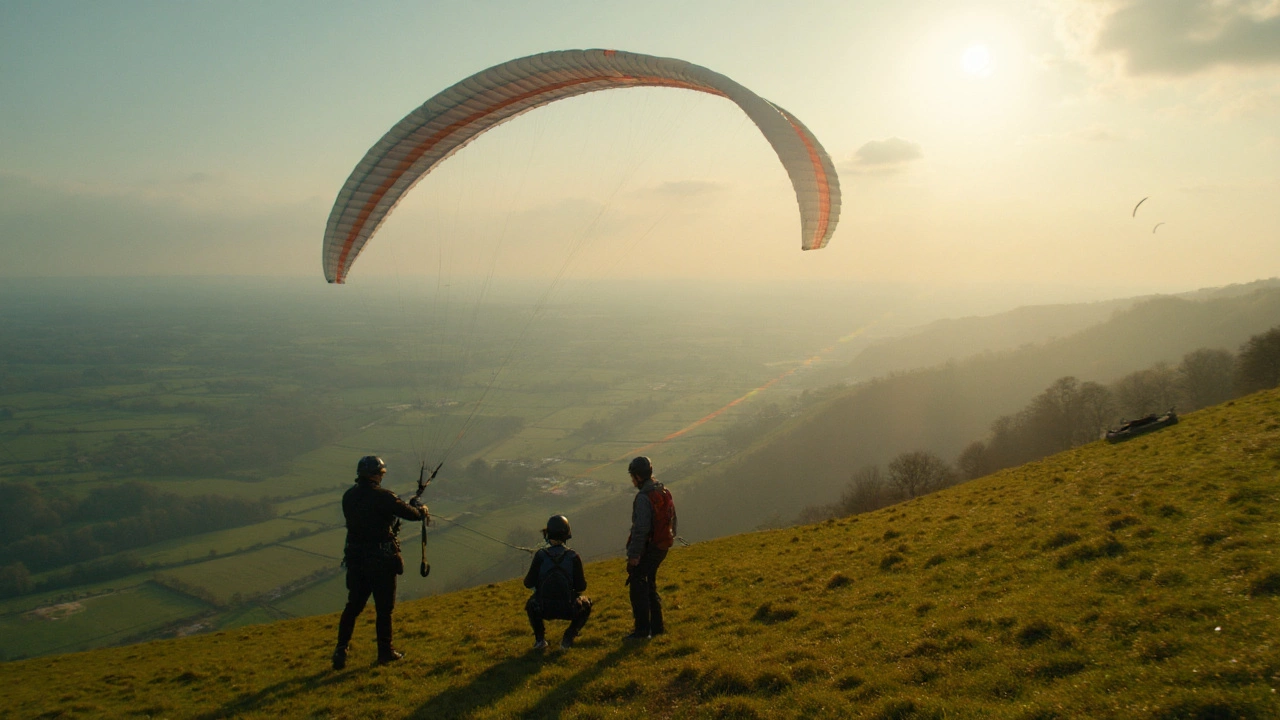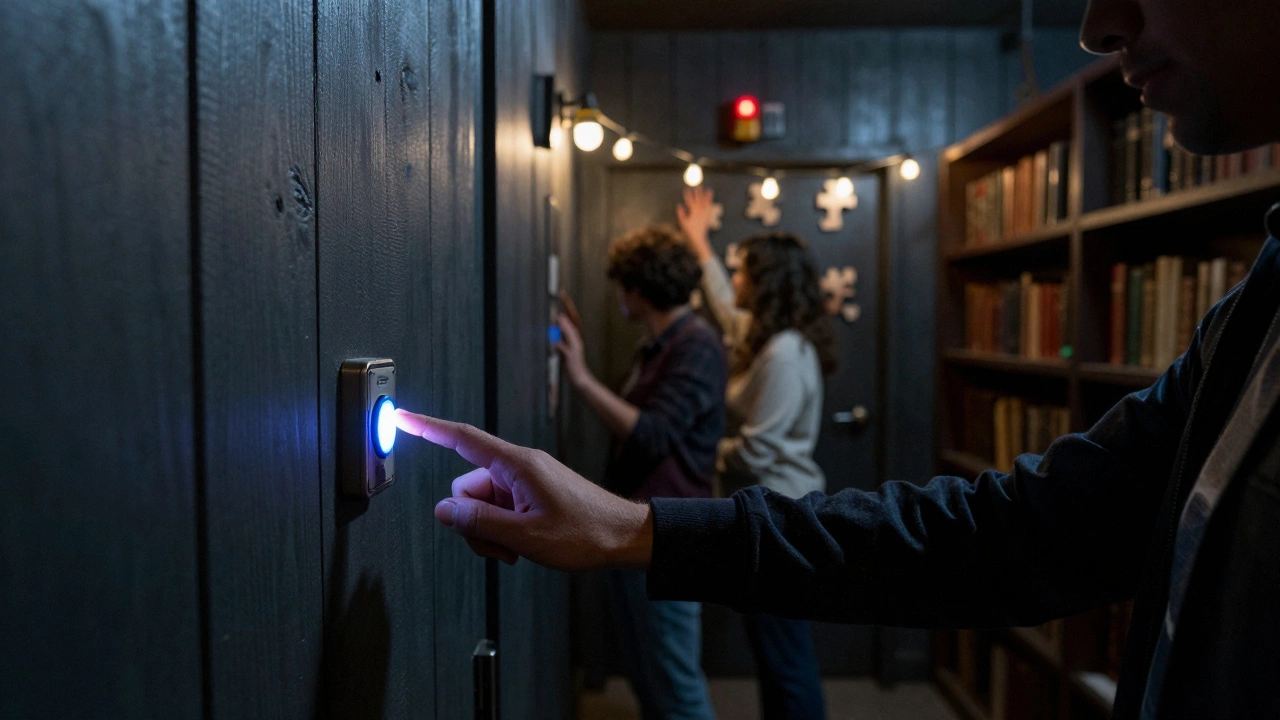The 3 Categories of Outdoor Activities: Land, Water, and Air (Clear Guide with Examples)

Most people think the outdoors is chaos-hundreds of sports, too much gear, too many rules. It’s not. Almost everything you can do outside falls into three simple buckets: land, water, and air. Know the bucket, and you know the skills, the risks, and the gear you need. In practice, this one mental model can save you money, time, and a few avoidable scares near the trailhead or the beach.
Outdoor activity is a recreation category that groups human-powered adventures into three types-land-based, water-based, and aerial-each with distinct terrain, equipment, skills, and safety practices.
TL;DR
- The three categories are land-based, water-based, and aerial. Each signals the terrain, skills, and safety systems you’ll use.
- Land is the cheapest to start (walk, hike, run). Water demands buoyancy control and weather checks. Air requires instruction and licensed providers.
- Pick by goal: fitness and access (land), cooling off or endurance (water), adrenaline and views (air).
- Safety rule of thumb: protect head on land, airway on water, and redundancy in air.
- Start small: green trails, flatwater, tandem flights. Level up with formal courses and local clubs.
What are the three categories of outdoor activity?
Think of the outdoors like a map with three layers. On the ground are land-based pursuits like hiking, trail running, mountain biking, and rock climbing. Water is everything afloat or underwater-swimming, surfing, kayaking, stand-up paddleboarding, and diving. Air covers activities where you’re primarily off the ground-paragliding, ziplining, hot-air ballooning, and skydiving.
That simple classification isn’t just neat; it’s practical. It tells you what to wear, what to train, and what can go wrong. Land stresses joints and navigation. Water stresses breathing and buoyancy. Air stresses fall protection and redundancy. This is the core logic behind guides, permits, and insurance forms.
How to choose your category: a quick decision framework
- Goal: Cardio and consistency? Choose land. Heat relief or endurance? Pick water. Bucket-list thrill or flying skills? Go air.
- Access: Got sidewalks, a park, or a local bush trail? Land is the fastest start. Live near a beach, lake, or harbour? Water is easy. Air needs a licensed operator and specific weather windows.
- Budget: Shoes and a bottle can get you jogging. Water adds PFDs, boards, or boats. Air needs professional gear and instruction.
- Risk comfort: Land has overuse and falls; water has drowning risk; air has altitude and descent risk. Choose the one you’ll respect and train for.
Land-based activities: the ground game
Hiking is a land-based outdoor activity that involves walking natural trails with elevation, navigation, and weather exposure management; typical pace burns 300-600 kcal/hour depending on grade.
Hiking is the gateway for most people because it scales: you can walk 30 minutes around your local reserve or spend a full day on the Coast Track in Royal National Park. The main skills are pacing, foot placement, and reading the terrain. A good rule: if you can’t hold a casual chat, you’re going too fast for an all-day hike.
Trail running is a land endurance sport that combines running with variable terrain, emphasizing cadence and stability; typical effort 600-900 kcal/hour. Trail running upgrades hiking by adding speed and agility. Stability and ankle strength matter. Short intervals on soft trails build resilience with less impact than road pounding.
Mountain biking is a cycling discipline that uses off-road bicycles on singletrack with technical features, requiring balance, braking control, and line choice. Start on green-rated trails and keep your eyes a few metres ahead. Drop your heels when descending; it anchors your weight and calms the bike.
Rock climbing is a vertical sport that uses hand/foot sequences on natural rock or artificial walls; types include bouldering (no rope, short), sport (bolted), and trad (gear placements). Begin indoors to learn movement and belay skills, then head outside with a qualified guide. Helmets matter more than you think; most head knocks are from falling objects, not your own falls.
Water-based activities: buoyancy, breath, and balance
Kayaking is a paddlesport that uses a double-bladed paddle to propel a small craft on flatwater or whitewater, emphasizing torso rotation and edging. Flatwater on a calm morning is ideal for beginners. Focus on rotating from the hips, not just your arms. Dress for the swim, not the weather-if you’d be cold in the water, you’re underdressed.
Surfing is a board sport that rides breaking waves using paddling, pop-ups, and trimming; success depends on swell, wind, and tide. Soft-top boards and beach breaks are friendlier than reef breaks. Respect rip currents; they move faster than most swimmers. A short walk sideways along the beach usually exits a rip safely.
Stand-up paddleboarding (SUP) looks chill because it is-on flatwater. Kneel to start, then rise with a wide stance. Keep your paddle blade angled forward; it’s a common beginner mistake.
Scuba diving is a underwater sport that uses a self-contained breathing system, buoyancy control, and dive planning based on depth-time limits. You’ll need formal training-look for reputable agencies and instructors. The golden habit: check your buddy’s air, buoyancy, clips, and weight before every descent.
Aerial activities: gravity with a plan
Paragliding is an aerial sport that launches a fabric wing by foot from slopes or cliffs, using thermals and ridge lift to stay aloft. Take a tandem flight first to learn about wind windows and landing patterns. Weather is king here; light winds with steady direction are your friend.
Skydiving is an aerial descent sport that involves exiting an aircraft, freefalling at ~190-220 km/h, then deploying a parachute with reserve and AAD (automatic activation device) backups. This one is inherently operator-led for beginners. Ask about gear maintenance logs and instructor ratings; good drop zones are proud to show them.
Hot-air ballooning and ziplining also sit in the aerial bucket. They’re more scenic than skill-based for participants, but the same rule applies: trust licensed operators and ask how weather decisions get made.
Comparison: land vs water vs air
| Attribute | Land-based | Water-based | Aerial |
|---|---|---|---|
| Starter cost | Low (shoes, bottle) | Medium (PFD, board/boat, wetsuit) | High (instruction, tandem fees) |
| Key risk | Falls, overuse, heat | Drowning, hypothermia, currents | Altitude/fall, weather shifts |
| Weather sensitivity | Moderate | High (wind, swell, tide) | Very high (wind, thermals, cloud) |
| Skill curve | Gentle (walk → run → technical) | Moderate (buoyancy/balance) | Steep (flight planning, protocols) |
| Accessibility | Everywhere: parks, trails | Coasts, lakes, rivers | Specific sites/operators |
| Fitness focus | Endurance/strength | Core/breath/endurance | Nerve control/awareness |
Safety, standards, and weather: the non-negotiables
The safety principle is simple: protect the line that matters most. On land, that’s your head and legs (helmets for bikes and climbing, shoes with grip, poles for descents). On water, it’s your airway-personal flotation devices keep your mouth above the mess. In the air, redundancy is life: reserve parachutes, pre-flight checks, and clear abort rules.
Australian Adventure Activity Standard is a best-practice guideline that outlines risk management and group leadership for outdoor activities in Australia. If you join a guided trip, ask how they apply these standards. It’s a quick way to sort pros from pretenders.
Leave No Trace is an environmental ethic that teaches seven principles for minimizing impact, including planning ahead, disposing of waste properly, and respecting wildlife. It matters in all three categories because access relies on healthy places. Micro-trash and shortcut trails close parks faster than we think.
Bureau of Meteorology is a national weather service that provides forecasts, marine warnings, and tide information used for outdoor planning in Australia. Check wind and swell for water and air days; check heat, storm risk, and fire danger for land days. If the forecast says “strong wind warning,” reschedule your paddle or flight. Simple as that.

Starter gear by category (and what actually matters)
- Land: Trail shoes with real lugs, 1-2 L hydration, map app plus paper backup, sun protection. For bikes: quality helmet, gloves, and a multi-tool.
- Water: PFD that fits snugly, leash (for SUP/surf), wetsuit matched to water temperature, bright rash shirt for visibility.
- Air: Book with licensed operators. Ask about reserve systems, pilot credentials, and wind limits. Bring layers; it’s colder aloft.
Pro tip: buy safety gear first, toys second. In water sports, a good PFD and wetsuit extend your season and comfort more than a fancy board ever will. On land, shoes that fit beat carbon plates for most people. In the air, reputation and maintenance logs are the “gear” you’re buying.
Training progressions that stick
- Land: 3×/week brisk walks → add hills → jog intervals → one longer outing. For technical trails, practice short downhill repeats to build footwork.
- Water: 2× pool sessions for stroke and breath control → flatwater paddles with a buddy → small surf/slow rivers. Learn self-rescue before distance.
- Air: Tandem flight → ground handling course → supervised solo (club-based) → conservative personal rules (wind speed, direction, time of day).
Use objective gates. Example: only move from flatwater SUP to small surf once you can step-back turn and remount in 10 seconds. For climbing, only lead outside once you can cleanly top-rope two grades harder indoors and demonstrate safe belay communication.
Costs: what you’ll actually spend
Here’s a blunt breakdown you can trust for starter setups (Australia, 2025):
- Land: Shoes (AU$120-220), daypack (AU$80-150), basic first-aid (AU$30), sun gear (AU$30). Borrow poles until you know you like them.
- Water: PFD (AU$120-200), wetsuit (AU$150-300), entry-level SUP/kayak (AU$500-1,200), leash (AU$30). Or rent (AU$25-60/session) to test fits.
- Air: Tandem paragliding (AU$250-350), skydiving tandem (AU$300-450). Pilot training and gear are a separate, longer-term commitment.
Memberships and clubs save money and add safety. Local bushwalking clubs, paddling clubs, and gliding clubs often include skills nights, trip leaders, and gear libraries.
Practical examples in and around Sydney
Land: The Blue Mountains’ Grand Canyon Walk delivers cool gullies, cliffs, and a mix of stairs and undulations-great for learning pacing on terrain. Closer to the city, the Spit to Manly track adds tidal views and gentle technical sections.
Water: Flat mornings on Sydney Harbour are perfect for SUP before the wind fills in. Surf-wise, look for small, clean beach breaks on the Northern Beaches or Bondi early, and always check for flags and surf lifesavers.
Air: Tandem paragliding sites like Stanwell Park work on the right wind. Operators will cancel if it’s wrong. That’s a good thing. Trust it.
Related concepts and connected topics
- Navigation basics: maps, compasses, GPS apps, and how to handrail terrain features.
- Environmental care: track hardening, invasive species control, fire regimes, and seasonal closures.
- Human performance: aerobic zones, strength for stability, heat acclimation, hydration and sodium balance.
- Risk management: trip plans, check-ins, emergency beacons (PLB), and group decision-making.
- Access and permits: park booking systems, marine park rules, and airspace regulations.
Why this classification works
This three-way split isn’t arbitrary. It lines up with how bodies, gear, and systems behave in the real world. Shoes grip rock and dirt; boards and boats float in water; wings and parachutes rely on air movement. Each environment changes how we fail: slips and sprains on land, breath and buoyancy in water, decision and descent in air. Once you see it, you’ll plan better and spend smarter.
Put simply: outdoor activities categories act like a universal legend for your map of the outdoors. They don’t limit you-they help you level up safely.
Mini checklists
- Land quick check: shoes, water, map, weather, head protection as needed, tell someone your route.
- Water quick check: PFD, leash, thermal wear, local hazards (rips, rocks), wind/tide window, buddy plan.
- Air quick check: operator credentials, weather limits, reserve system, personal comfort rule to abort.
Next steps and troubleshooting
- If you keep getting blisters (land): go up a half size, try merino socks, and tape hotspots before you start.
- If you get winded fast (water): slow the cadence, lengthen your stroke, and exhale fully under effort; shallow breathing burns you out.
- If nerves spike (air): ask to rehearse abort cues on the ground; clear scripts reduce panic.
- Struggling with weather calls: write a pre-trip go/no-go rule (e.g., “no paddle if gusts > 20 knots”); stick to it.
- Unsure about skill leaps: book a half-day course; one good coach can replace months of guessing.

Frequently Asked Questions
What are the three categories of outdoor activity?
Land-based (on trails and terrain), water-based (on or under water), and aerial (off the ground using wings, parachutes, or lines). This split maps to different gear, skills, and safety systems: land protects head and joints, water protects the airway, and air doubles down on redundancy and weather windows.
Which category is best for beginners on a tight budget?
Land-based. Start with walking or hiking. You need comfortable shoes, water, and sun protection. Add a basic first-aid kit and a map. You can rent or borrow anything else later. It builds fitness and confidence fast without big spend.
How do I make water activities safer if I’m not a strong swimmer?
Wear a properly fitted PFD, pick flatwater with easy exits, go with a buddy, and practice remounts and self-rescue first. Check wind and tide. Consider a pool-based stroke lesson. Royal Life Saving’s guidance and local surf lifesavers are good touchpoints for tips and courses.
Do I need a guide for aerial activities like paragliding or skydiving?
Yes for your first experiences. Tandem flights and jumps pair you with licensed professionals and gear with reserve systems. Ask operators about instructor credentials, maintenance logs, and weather decision policies. If they’re vague, walk away.
What weather checks do I need before heading out?
Land: temperature, storm risk, fire danger. Water: wind speed/direction, swell height/period, tide times. Air: surface and upper winds, thermal activity, cloud base. In Australia, the Bureau of Meteorology provides marine warnings and detailed forecasts to support go/no-go calls.
How does fitness carry over between categories?
Endurance from hiking or running helps everywhere, but water adds breath control and core stability, and air adds calm decision-making under stress. Cross-train: one land day, one water day, and occasional aerial instruction if that’s your goal.
Are there permits or rules I should know about?
Yes. Parks may require bookings for popular tracks, marine parks restrict fishing or anchoring, and aerial sites have site rules and airspace constraints. Check your state park authority and local clubs before you go. Guided operators should brief you on all of this.
What’s the simplest way to level up safely?
Use a step-up rule and a buddy. Land: add 10% distance or elevation per week. Water: only add one variable at a time (distance or conditions). Air: expand weather windows slowly and debrief every session with a coach or club pilot.
Sources to trust for standards and safety education include the Australian Adventure Activity Standard, Leave No Trace Center for Outdoor Ethics, Royal Life Saving Society, national sport bodies for each activity, and your state park service. They keep their guidance current and practical.

